By Jo Briscoe
St Philip Neri Apostle of Rome and Founder of The Congregation of the Oratory
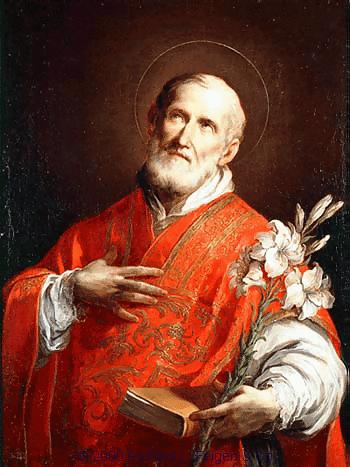
St Philip Neri is one of the best-loved saints of all time. Known as the ‘”Apostle of Rome’’ he set in motion a great renewal of Christianity at the heart of the Church’s capital city. St Philip’s foundation of the Oratory began by stimulating young laymen to conversion, prayer and apostolic works, and through them gradually brought about a reform of the entire Church, at all levels of society. St Philip inspired many through his words, his miracles and his spiritual gifts, which show many similarities with other great saints. As is well known, originally our church was dedicated to the sixteenth century Italian priest, St Philip Neri (1515-1595). St Philip’s was seen to be a parish church for the Catholic community of Arundel and the surrounding villages in the Diocese of Southwark. With Duke Henry’s devotion to St Philip Neri, an altar was built in the south transept, as well as a statue of the Saint, with stained glass
windows above showing scenes from his life.
With the new Diocese of Arundel and Brighton created in 1965, the church became a Cathedral, with the dedication changing to “Our Lady and St Philip Neri”. Subsequently, in 1971 the remains of the martyred 13th Earl of Arundel, St Philip Howard (1557-1595), were brought from the Fitzalan Chapel in the grounds of Arundel Castle and enshrined in the Cathedral. The Cathedral’s dedication finally changed in 1973 to “Our Lady and St. Philip Howard”. This followed the canonisation of Philip Howard, together with 39 English and Welsh martyrs of the Reformation on 25 October 1970.
St Philip Neri lived in one of the most eventful centuries in the history of the Church: the time of the Protestant Revolt, the Council of Trent and the Catholic Counter-Reformation. Although the Church was then suffering from great laxity among both clergy and lay people, the 16th century was also the “Century of the Saints”. St Philip was a contemporary of numerous canonised saints, including St Teresa of Avila, St John of the Cross, and St Francis Xavier, and he knew personally
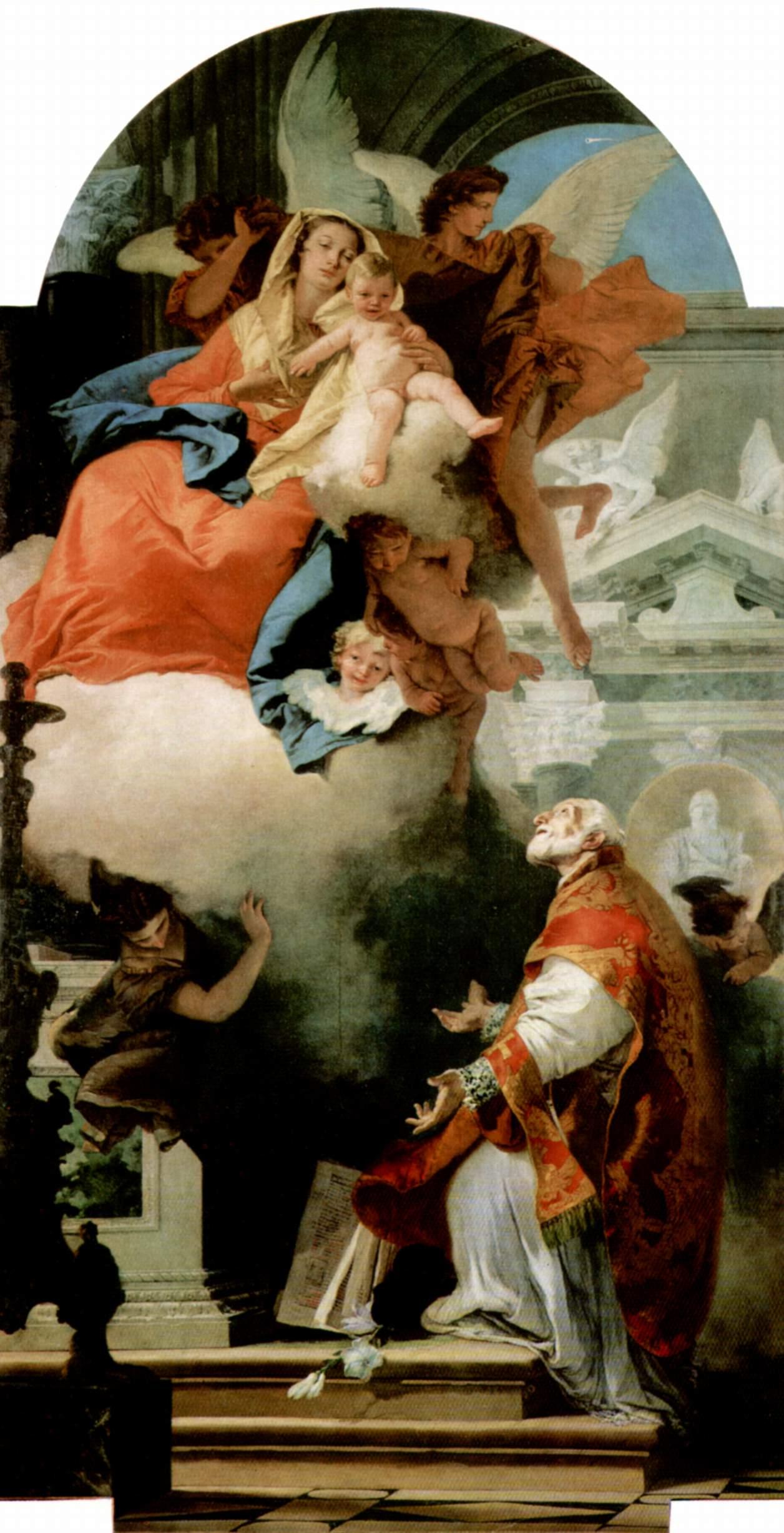
St. Philip Neri and the Virgin Mary, by Tiepolo
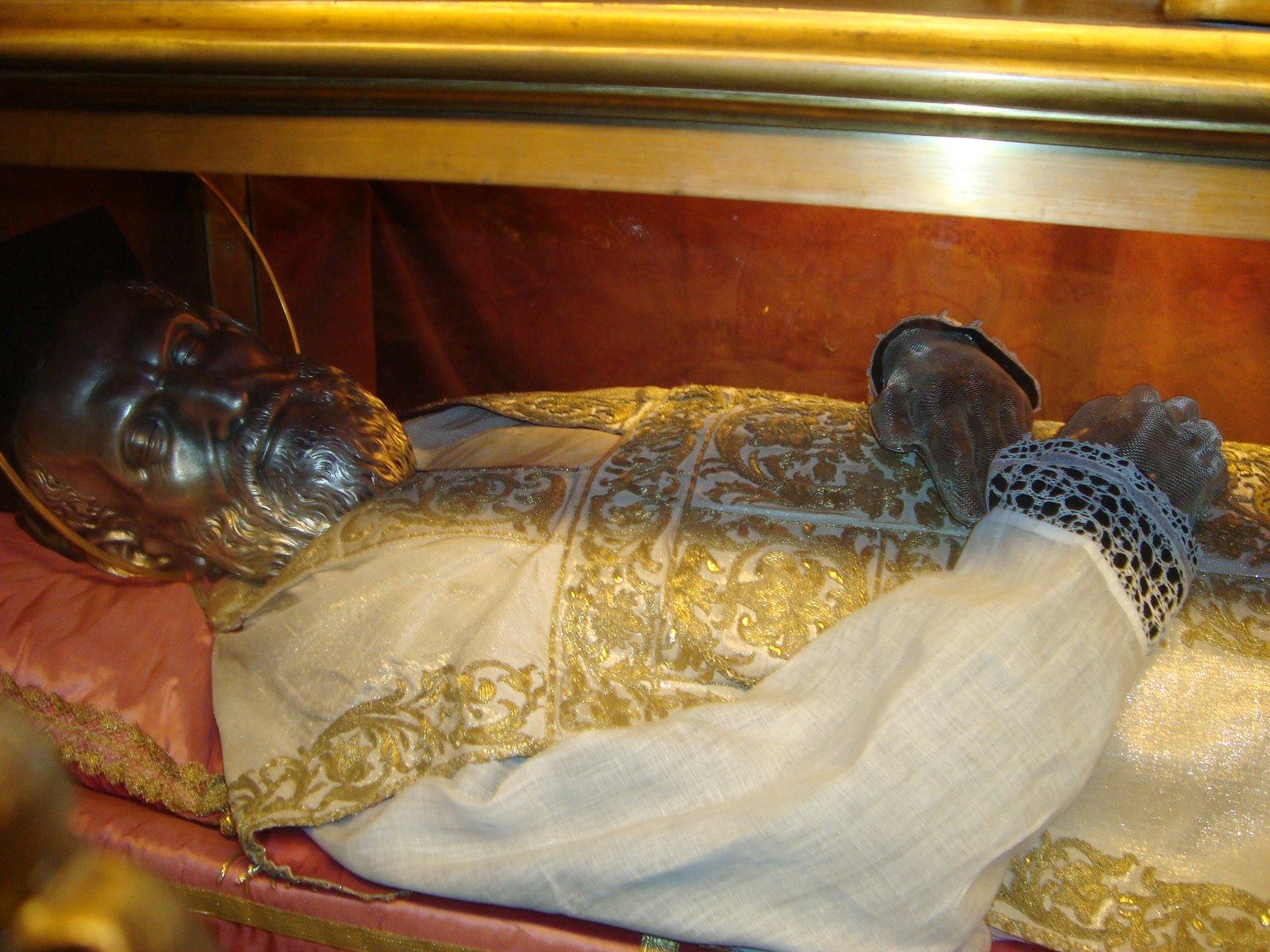
St Ignatius Loyola and St Charles Borromeo. Yet when we read the life of St Philip Neri, we find very little reference to the momentous events taking place in the Church as a whole. Philip was born in Florence, the eldest son of an established citizen of Florence and he lived with his family until reaching the age of 18 years.
Having spent his young life quietly visiting the churches of the city where he had a deep inner devotion to God, and, although he never spoke of being a priest or a monk, he loved to visit S Marco where he devoted his time praying, or sitting quietly in a corner of Santo Spirito delighted by frescoes in S Croce, or the paintings of Blessed Fra Angelico, often on his knees in cloister, chapter-room and
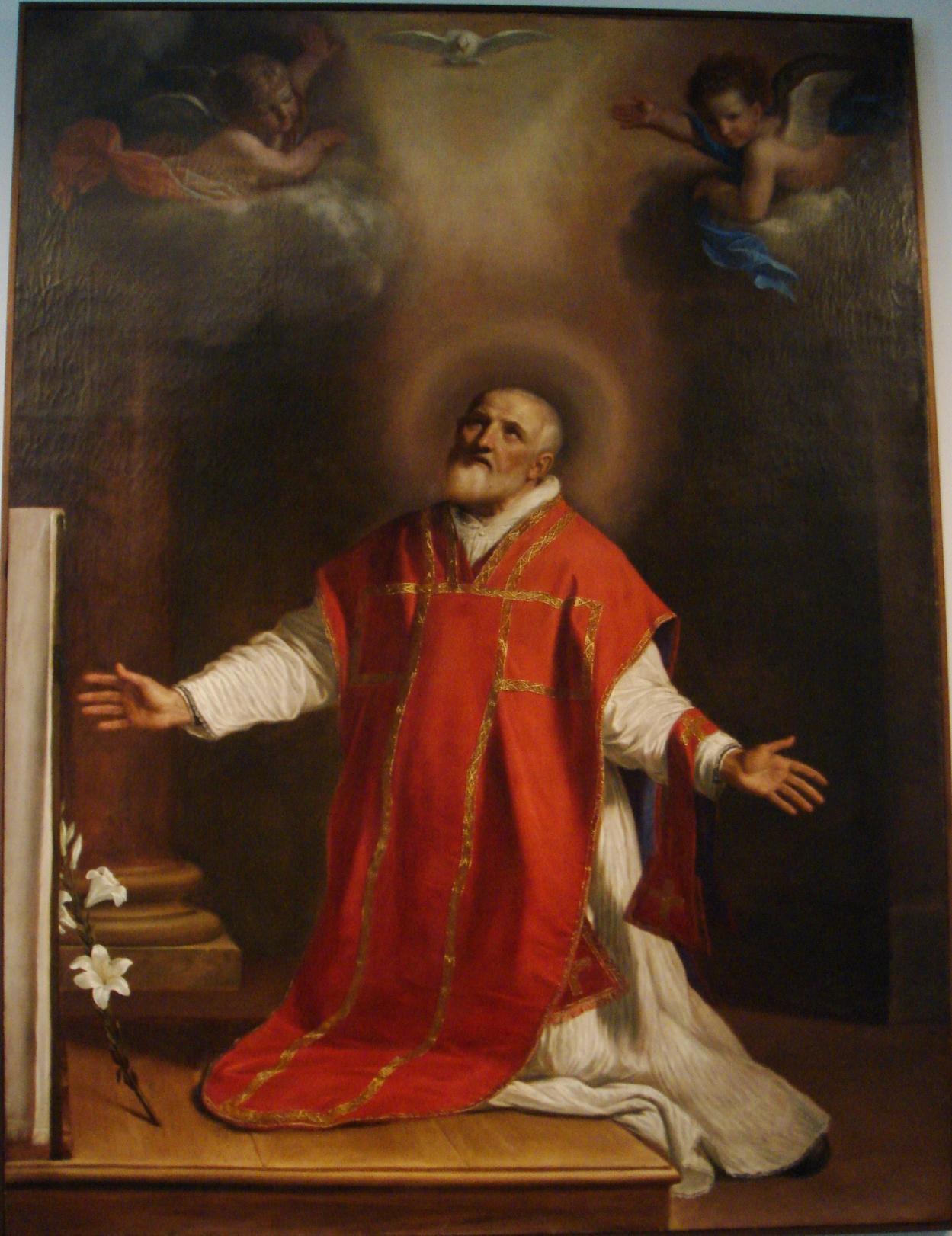
Philip Neri, as painted by Guercino in 1656 dormitory of S Marco. He also had special friends among the Dominican fathers (which lasted for the whole of his life). When he reached 18 years old he left Florence and went to live with an uncle in Naples. Close by there was a sanctuary dedicated to the Holy Trinity, belonging to the Benedictine monks of Monte Cassino, and to this chapel, reached by an iron ladder, Philip used to pray in quiet and solitude. Whether it was the result of some sudden and extraordinary mystical experience, or whether it came only through the gradually deepening understanding and conviction as to God’s will, by which the Holy Spirit ordinarily speaks to the soul disposed to receive his inspirations, here, at any rate, the decision was made. He would leave his uncle and any prospects of wealth that his uncle could hold out to him, and set out for Rome, to do whatever God should call him to do. Beginning, probably, in 1534,
Philip followed the course of philosophy at the university of Sapienza, and subsequently the course of theology under the Augustinian fathers of St Augustine. His studies, however, were not allowed to interfere with his prayer; rather the contrary was the case. Because of his deep spirituality, Philip spent the next ten years
of his life as a hermit, made up of pilgrimages to Seven Churches as well as other places with holy associations, whilst living in the caves of S Sebastiano. In one particular chapel he had an extraordinary experience. He was twenty nine years old at the time, and as the feast of Pentecost was approaching, Philip, who had always had a special devotion to the Holy Spirit, was praying with extreme earnestness for his gifts and graces, when he seemed to see a globe of fire which entered his mouth and sank down into his heart. At the same time, he was pervaded by a fire of love which seemed to be a positive physical heat, so that he had to throw himself on the ground and bare his breast to cool it. When he rose he was seized with a violent
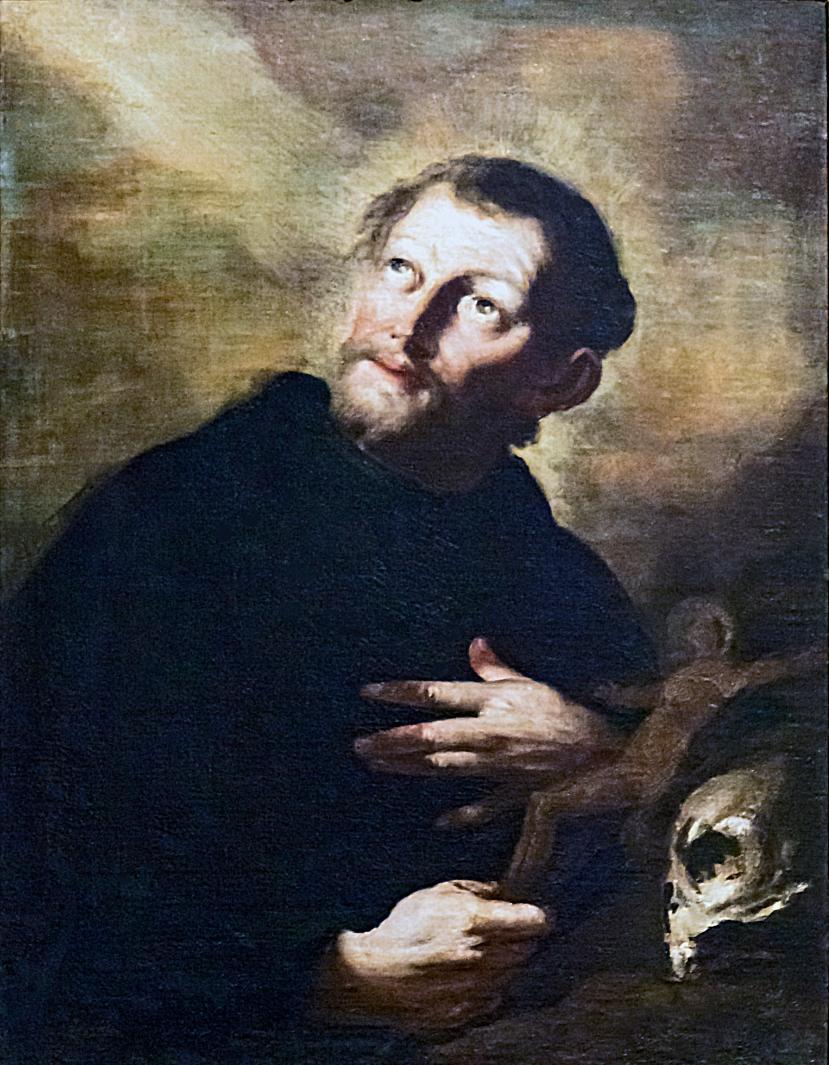
Portrait of Saint Philip Neri by Giuseppe Nogari - Basilica di Santa Maria Gloriosa
trembling, accompanied by an extraordinary sense of joy, and putting his hand to his heart, he felt there a swelling as big as a man’s fist. (After his death it was discovered that the first two of the false ribs were broken, and the broken ends thrust outwards, never having rejoined or returned to the normal position during the fifty remaining years of Philip’s life). At the same time there began that palpitation of the heart which lasted throughout his life, and made itself felt particularly when he was praying, hearing confessions, saying Mass or giving Communion, or when he was speaking on some subject which stirred his emotions.
At the beginning of the 16th century, the religious situation in Rome was corrupt and lukewarm, and the people lived in a state of spiritual malaise. St Philip’s mission was to convert and sanctify innumerable souls in Rome by preaching in the marketplaces, hearing confessions, directing souls, caring for the sick in the primitive hospitals of the day, ministering to needy pilgrims, and performing miracles, as well as by searching out wayward souls who did not recognise their own spiritual misery. This work was carried out through much personal contact and also through the congregation known as the “Oratory”.
Philip was ordained in 1551, at the age of 36 years. After his ordination Philip went to live at S Girolamo della Carita. This little church was the headquarters of an important Archconfraternity of Charity. The situation of the church gives us an interesting link between
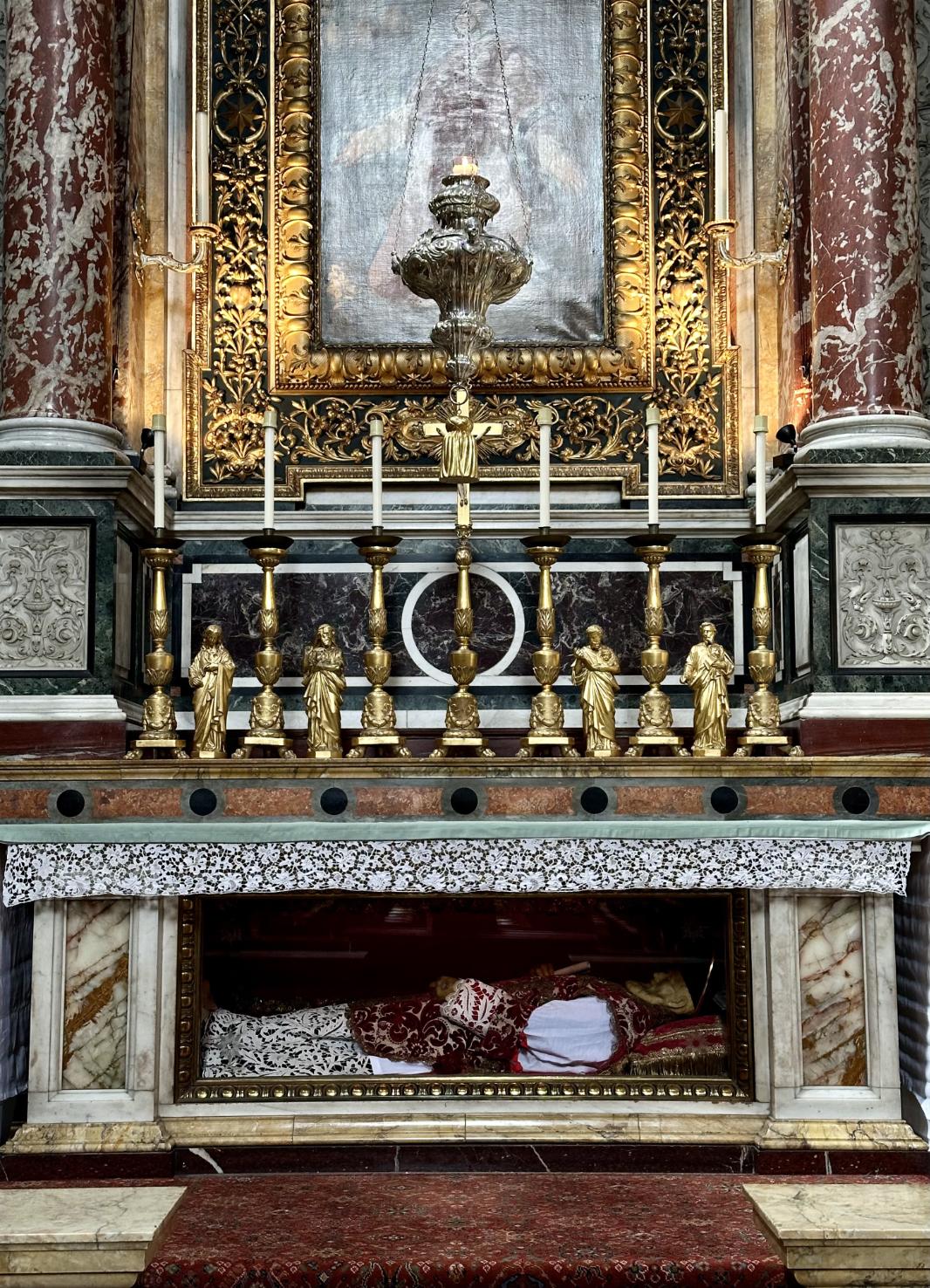
Philip and the persecuted English Catholics of Queen Elizabeth’s reign. The English College, founded by Gregory XIII, occupied, and still occupies, a site in the via di Monserrato directly opposite S Girolamo della Carita. Philip must, therefore, have been constantly meeting the young students of the college, and he used to greet them with the words of the hymn in the Office of the Holy Innocents: Salvete Flores Martyrum (“Hail, flowers of the Martyrs”). There is a tradition that they always went to get Philip’s blessing before setting out for their own country as priests, with the
certainty of having to face a dreadful martyrdom should they fall into the hands of Elizabeth’s Government; but anyone who neglected, out of contempt, to get this blessing, ended by falling away from the faith.
In those early days Philip would go down to the church first thing in the morning to his confessional, and scarcely stir from it till noon, his usual time for saying Mass. If no one came, he would stay near his confessional reading or saying his office or rosary; or he would walk a little way outside the church, so that casual passers-by could see that he was available. Soon, however, there was never any lack of penitents. Those who went to Philip once,
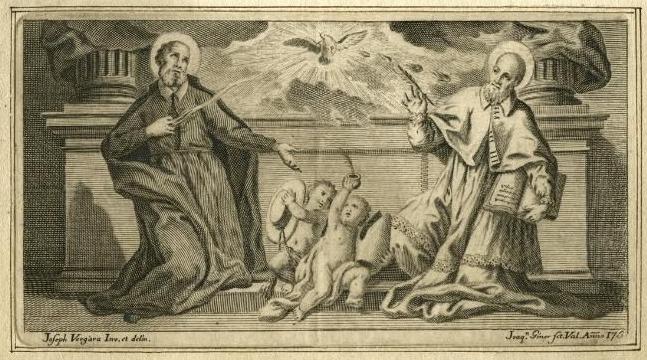
especially if they were young men, were conscious of some peculiar attraction in him which brought them back to him again and again, so that before long it was no extraordinary thing for him to have heard as many as forty confessions in his room before going down to the church! After the conversations they used to go for a walk together, perhaps to visit some church or other, and some of them would go back again with Philip to S Girolamo for prayer in the evening. These two features, the conversation in the afternoon and the prayer in the evening are of great importance; they are the germ of all that the Oratory was to become in its most essential elements. Philip led these young men towards devoting their lives to God. Philip’s apostolate and the spirit which directed it seemed to be that his method was to have no standardised form; he acted from day to day and from hour to hour according to the impulses of tender charity which moved him to treat one soul in this way and another in that, in obedience to
the interior movements of the Holy Spirit, whose guidance he so humbly and constantly sought and so faithfully tried to follow. He won souls partly by his personal charm, and partly by the exercise of supernatural gifts. His friends testified of him that “He was so affectionate that he drew all the world after him in the most wonderful way imaginable.”
It was his desire to kindle in others the fire of the love of God with which he himself burned, a fire kept alive within himself by his unceasing prayer.
Unlike many of the great saints of that era, St Philip found that his vocation was to a single city. The exact nature of his vocation had not always been clear. When he was around 42 years old, after having been a priest for about six years, he and several companions began reading the letters of St Francis Xavier and other missionaries in India.
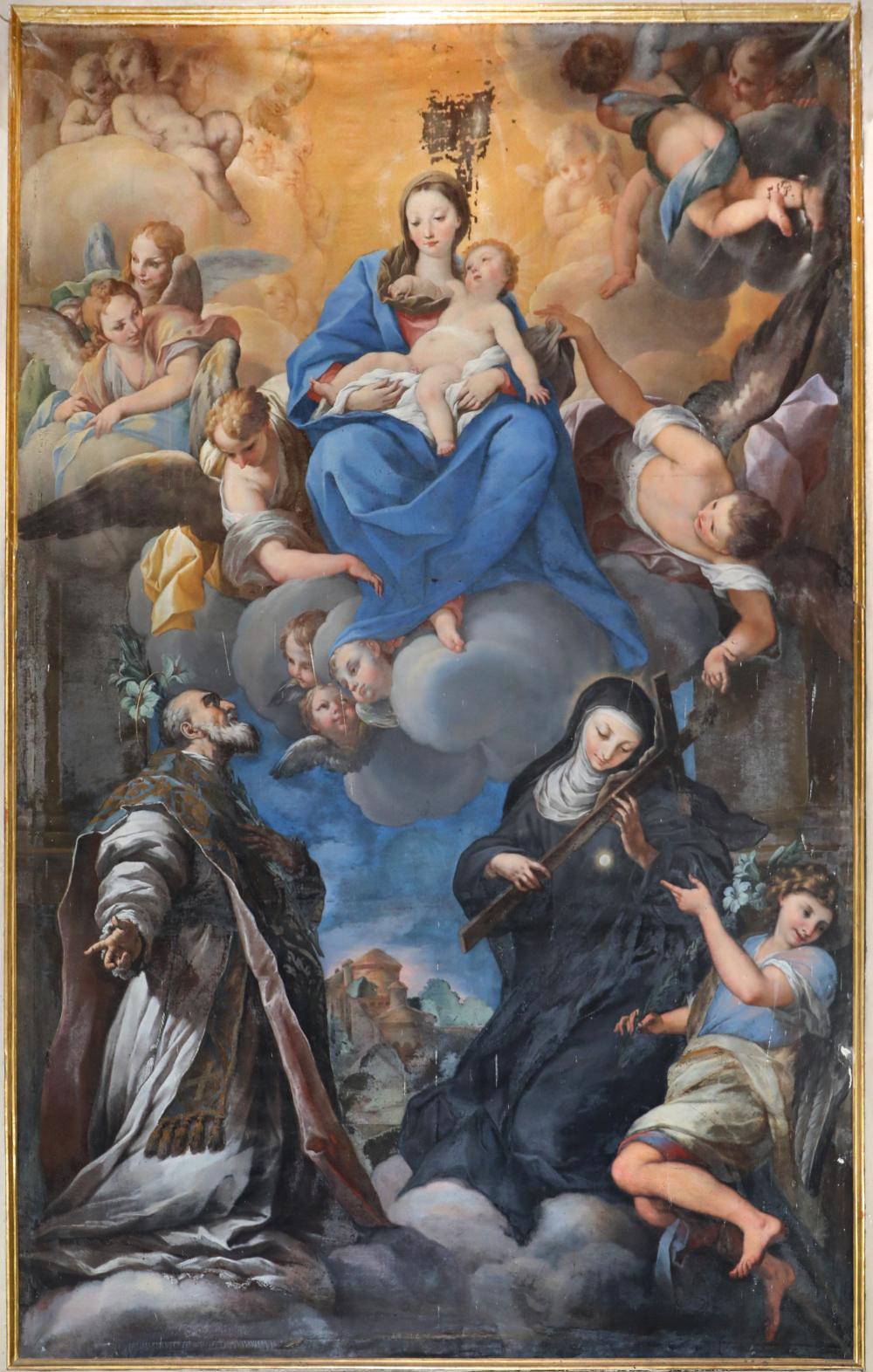
They became fired with enthusiasm to go to the Far East to save souls and win the crown of martyrdom. But to make sure of God’s will, Philip consulted a holy Cistercian who was favoured with visions of St John the Evangelist. The Cistercian reported that St John had appeared and had delivered this message for Philip: “Rome is to be your Indies”.
To the souls in Rome, then, St. Philip devoted his life. The distinctive mark of his apostolate was cheerfulness, and everyone was captivated by his supernatural charm. Philip soon became the most popular person in the city and was generally known and loved as “the Apostle of Rome”. He was loved for his own sake and for his influence on Oratoriansincluding St John Henry Newman – right down to our own times! The improvement in the religious spirit of Rome between the opening and closing years of the 16th century is largely attributable to this one man. By all he did to sanctify Rome, St Philip Neri exerted an incalculable influence for good upon the Universal Church, which owes him – even to our own time – a debt of unimaginable magnitude.
